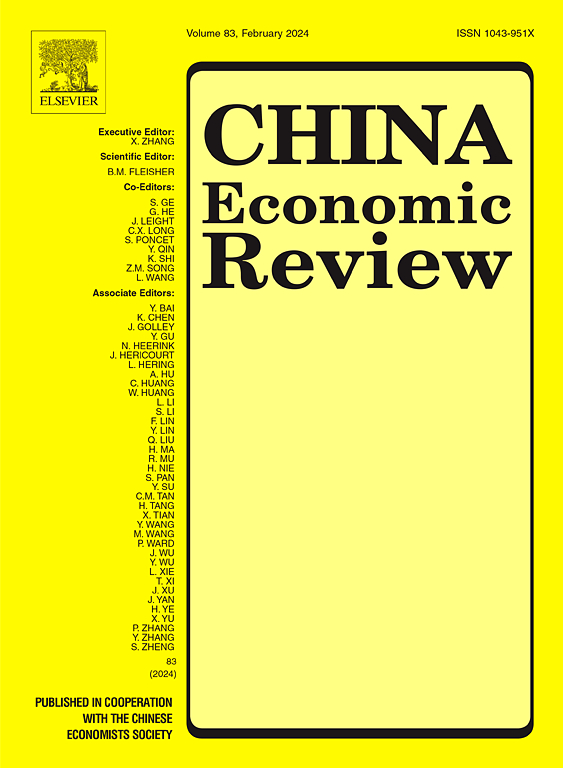中国财政乘数、行业异质性与再配置
IF 5.5
1区 经济学
Q1 ECONOMICS
引用次数: 0
摘要
本文研究了行业异质性对中国财政乘数的影响,重点研究了资本密集型重工业和劳动密集型轻工业之间的资源再配置。通过应用贝叶斯SVAR模型来识别1992年第一季度至2015年第三季度的财政支出冲击,我们发现总产出乘数为0.76,重工业的产出乘数为1.09,轻工业的产出乘数为- 0.25。财政支出冲击导致劳动力成本上升,资本成本下降,轻工业企业消失——所有这些都是由要素再配置驱动的。我们的具有异质性生产者和金融摩擦的两部门模型解释了这些动态,突出了财政政策在重塑部门产出方面的作用。本文章由计算机程序翻译,如有差异,请以英文原文为准。
Fiscal multipliers, sectoral heterogeneity and reallocation in China
This paper investigates the impact of sectoral heterogeneity on fiscal multipliers in China, focusing on resource reallocation between the capital-intensive heavy sector and the labor-intensive light sector. By applying a Bayesian SVAR model to identify fiscal spending shocks over 1992Q1–2015Q3, we find an aggregate output multiplier of 0.76, with output multipliers of 1.09 for the heavy sector and − 0.25 for the light sector. Fiscal spending shocks lead to rising labor costs, declining capital costs, and the disappearance of light-sector firms—all driven by factor reallocation. Our two-sector model with heterogeneous producers and financial frictions explains these dynamics, highlighting the role of fiscal policy in reshaping sectoral outputs.
求助全文
通过发布文献求助,成功后即可免费获取论文全文。
去求助
来源期刊

中国经济评论
ECONOMICS-
CiteScore
10.60
自引率
4.40%
发文量
380
期刊介绍:
The China Economic Review publishes original works of scholarship which add to the knowledge of the economy of China and to economies as a discipline. We seek, in particular, papers dealing with policy, performance and institutional change. Empirical papers normally use a formal model, a data set, and standard statistical techniques. Submissions are subjected to double-blind peer review.
 求助内容:
求助内容: 应助结果提醒方式:
应助结果提醒方式:


